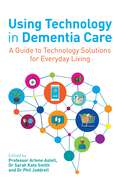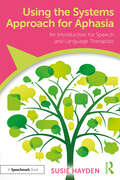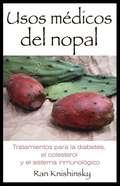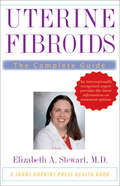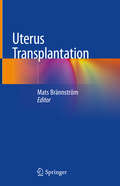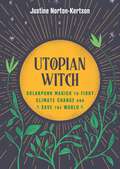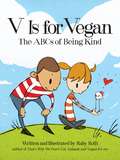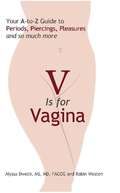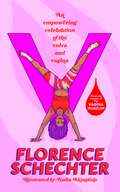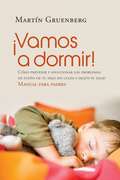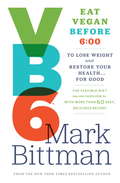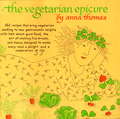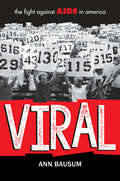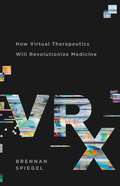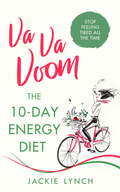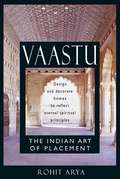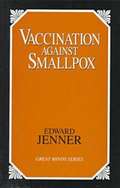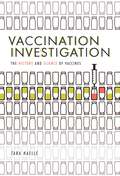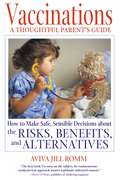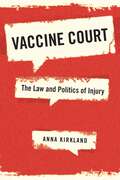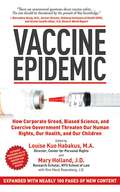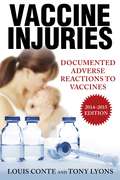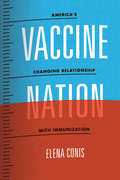- Table View
- List View
Using Technology in Dementia Care: A Guide to Technology Solutions for Everyday Living
by Sarah Smith Arlene Astell Phil JoddrellMany new pieces of technology can be beneficial to individuals living with dementia, including both hardware and software. This straightforward guide summarises the current research on this growing topic, and gives practical advice on how available technology can be used to improve the everyday lives of people with dementia.Looking at a range of available products, such as off-the-shelf computers and smartphones, to dementia specific applications and programs, it also addresses some common obstacles and barriers faced when introducing technology in dementia care. The past twenty years have seen an array of technologies developed to improve the day-to-day lives of people with dementia; this guide shows how they can be effectively used.
Using the Systems Approach for Aphasia: An Introduction for Speech and Language Therapists
by Susie HaydenUsing the Systems Approach for Aphasia introduces therapists to systems theory, exploring the way in which a holistic method that is already a key part of other health and social care settings can be employed in aphasia therapy. Detailed case studies from the author’s own extensive experience demonstrate how systemic tools can be incorporated into practice, offering practical suggestions for service delivery and caseload management in frequently overloaded community health services. Exploring the treatment process from first encounters, through the management of goals and attainments, to caring for patients after therapy has ended, the book demonstrates a method of delivering therapy in a way that will better serve the people who live with aphasia and their families, as well as the clinician themselves. Key features of this book include: • An accessible overview of systems theory and its use in aphasia therapy. • Consideration of how current popular ideas such as self-management, holistic rehabilitation and compassion focussed therapy can be incorporated to provide the best treatment. • Guidance on when and how to involve families based on case studies. • Case studies throughout to fully illustrate systemic approaches. An essential resource for both students and seasoned clinicians, the theory explored in this book will provide a fresh approach to therapy and new skills for working with people with aphasia and their families.
Usos médicos del nopal: Tratamientos para la diabetes, el colesterol y el sistema inmunológico
by Ran KnishinskyLa primera guía completa a los usos y las propiedades naturales de sanación del nopal • Examina las investigaciones científicas que promueven el nopal como un remedio natural para la diabetes y el colesterol y analiza además su uso en el tratamiento de la obesidad, los trastornos gastrointestinales, las afecciones de la piel y las infecciones virales • Incluye 24 recetas con el nopal, desde el pan de tuna hasta el caramelo de nopal El nopal --una planta que tiene la distinción de ser al mismo tiempo hortaliza, fruta y flor-- está destinado a ser la próxima gran superestrella de los remedios botánicos, como lo han sido la hierba de San Juan y la equinácea. Desde hace cientos de años ha sido un alimento básico en las dietas de los pueblos de la región suroeste de los Estados Unidos, del Oriente Medio, partes de Europa y África y América Central y del Sur, y se ha utilizado como panacea para más de cien dolencias distintas. Más recientemente, ha sido objeto de pruebas e investigaciones relacionadas con el nivel de colesterol en sangre, patrocinadas por la Asociación Estadounidense de Cardiología, y se utiliza en el tratamiento de la obesidad, trastornos gastrointestinales y afecciones de la piel. El libro contiene una sección en la que se detallan los productores de alimentos naturales que distribuyen el nopal, así como un capítulo de recetas en el que se presentan 24 platos tradicionales y modernos en los que se utilizan las tunas y nopales.
Uterine Fibroids: The Complete Guide (A Johns Hopkins Press Health Book)
by Elizabeth A. StewartProviding the most reliable and up-to-date information on this very common and difficult disorder, Dr. Stewart helps women understand uterine fibroids and make the best possible choices about their care.You've called in sick today. Your back and legs hurt. Your abdomen is bloated and more than a little uncomfortable. You are having your period, and the bleeding is so heavy you can't even think about leaving the house. You have uterine fibroids.One in every four women see their lives affected by uterine fibroids, which can cause heavy bleeding, abdominal bloating, pain, and infertility. The symptoms can be mildly annoying or life altering in severity. Until recently, hysterectomy was the only way to cure fibroids, and each year more than 200,000 hysterectomies are performed in the United States to treat these noncancerous growths. But hysterectomy isn’t always the best solution. The procedure can be devastating for women who were planning to get pregnant, and it is a significant surgery for anyone. In this comprehensive and compassionate guide, Dr. Elizabeth A. Stewart helps women understand the treatment options now available.An internationally recognized expert on fibroids, Dr. Stewart describes all the available medical and surgical treatments as well as alternative and complementary therapies. In addition to hysterectomy, she explains uterine artery embolization (UAE), noninvasive focused ultrasound (FUS), and innovative hormone treatments. Simple diagrams and photographs illustrate the condition—and its treatment. Dr. Stewart encourages women with fibroids to learn as much as they can before choosing a treatment plan. Providing the most reliable and up-to-date information on this very common and difficult disorder, she helps women understand uterine fibroids and make the best possible choices about their care.
Uterus Transplantation
by Mats BrännströmThis book discusses all aspects of the uterus transplantation procedure in women who are childless because of a dysfunctional or missing uterus, from initial pre-operative investigations to follow-up after the uterine graft has been removed. All the international experts who are engaged in clinical activities and/or research in this field have contributed one or more of the book’s chapters. Since the first live birth following uterus transplantation was reported in Sweden in September 2014, the field has been rapidly evolving around the globe: the first cases in USA, Germany, China, Brazil, and Czech Republic were performed in 2016 and several other centres are preparing for clinical trials of uterus transplantation. Uterus transplantation is a subject that attracts the attention of many bioethicists, and like all other major procedures in transplantation surgery and assisted reproduction techniques, it is a complex process that requires a multidisciplinary team if it is to be successful. As such the book is a valuable resource not only for clinicians from many disciplines, but also for nurses, ethicists, psychologists and researchers.
Utopian Witch: Solarpunk Magick to Fight Climate Change and Save the World
by Justine Norton-KertsonThis solarpunk book of shadows will guide you in surviving and resisting climate crisis and dystopian political systems so you can take radical action towards a positive future. Longtime activist and practicing witch Justine Norton-Kertson introduces a fresh approach to witchcraft at a time when it&’s desperately needed. Drawing on the natural connections between modern paganism and the literary, artistic, and activist movement known as solarpunk, Norton-Kertson provides meditations and correspondences for developing a spiritual practice rooted in nature, the Sun, and a powerful belief in our ability to build a better world. Readers will also find a host of spells to use in the fight against climate change, fascism, and inequality. These politically conscious magickal practices forge a new spiritual praxis to guide us as we work together to envision and create the future we want to see.
V Is for Vegan: The ABCs of Being Kind
by Ruby RothIntroducing three- to seven-year-olds to the "ABCs" of a compassionate lifestyle, V Is for Vegan is a must-have for vegan and vegetarian parents, teachers, and activists! Acclaimed author and artist Ruby Roth brings her characteristic insight and good humor to a controversial and challenging subject, presenting the basics of animal rights and the vegan diet in an easy-to-understand, teachable format. Through memorable rhymes and charming illustrations, Roth introduces readers to the major vegan food groups (grains, beans, seeds, nuts, vegetables, and fruits) as well as broader concepts such as animal protection and the environment. Sure to bring about laughter and learning, V Is for Vegan will boost the confidence of vegan kids about to enter school and help adults explain their ethical worldview in a way that young children will understand. From the Hardcover edition.
V is for Vagina
by Robin Westen Alyssa Dweck" V Is for Vagina answers more questions about your vagina, more conditions it might suffer from and more ways to obtain pleasure from it than you ever thought to ask. It's a thorough - very thorough - examination of your friend and mine, the vagina." - Isadora Alman, MFTBreaking the mold on women's health guides, V Is for Vagina tells you the good, bad and time-for-a-trip-to-the-pharmacy truths. Covering everything from STDs and daily care to getting Brazilians and giving birth, this frank and funny guide will help every woman keep her lady flower happy and healthy.Featuring the most up-to-date, medically sound views on every V-jay related issue in a handy A-Z format, including:H is for Hormones The real scoop on hot flashes, libidos and everything in betweenO is for Orgasm Everything you ever wanted to know about The Big O (how to give 'em, get 'em and make them even more intense)P is for Pap What's really going on during your annual exam and what you should never be afraid to ask your doctorT is for Toys How to pick the most fun new accessories
V: An empowering celebration of the vulva and vagina
by Florence SchechterFrom the creator of the world's first Vagina Museum, discover your go-to guide to the vulva.The Vulva. For thousands of years, our vulvas and vaginas have been considered mysterious, taboo and shameful. In fact, 50%* of us, don't even know where the vagina actually is.In this uplifting, informative, witty and empowering guide, we'll explore:- How to label a vulva- The power of periods and the many myths around them- How vulvas have inspired art, folklore and music throughout history and across the world- How to cut through the noise of the feminine hygiene industry- How to feel empowered to call a vulva a vulva!Packed with fascinating contributions from leading activists and experts, V will help every reader discover their own BIG V ENERGY*2021
VAMOS A DORMIR! (EBOOK)
by Martin GruenbergEs necesario dejar llorar a nuestro hijo para que aprenda a dormir? En este libro el doctor Martín Gruenberg, médico pediatra y apasionado investigador de los problemas del sueño infantil, explica que dejar llorar a un niño para enseñarle a dormir es una herramienta que, utilizada de manera inadecuada, puede resultar contraproducente. También nos enseña a reconocer las distintas etapas madurativas por las que puede estar atravesando nuestro hijo y cómo resolver los trastornos de sueño asociados a ellas, respetando sus necesidades afectivas y emocionales. Con ejemplos y sugerencias prácticas ofrece distintas soluciones para otros temas relacionados con el sueño, como el ronquido y la enuresis, y nos sorprende con consejos útiles y aplicables para poner límites claros de acuerdo a la edad de cada niño.
VB6: Eat Vegan Before 6:00 to Lose Weight and Restore Your Health . . . for Good
by Mark Bittman“I live full-time in the world of omnivores, and I’ve never wanted to leave. But the Standard American Diet (yes, it’s SAD) got to me as it gets to almost everyone in this country.” Six years ago, an overweight, pre-diabetic Mark Bittman faced a medical directive: adopt a vegan diet or go on medication. He was no fan of a lifelong regimen of pills, but as a food writer he lived—and worked—to eat. So neither choice was appealing. His solution was a deal with himself. He would become a “flexitarian.” He adopted a diet heavy in vegetables, fruits, and grains by following a healthy vegan diet (no meat, dairy, or processed foods) all day. After 6:00 p.m. he’d eat however he wanted, though mostly in moderation. Beyond that, his plan involved no gimmicks, scales, calorie counting, or point systems. And there were no so-called forbidden foods—he ate mostly home-cooked meals that were as varied and satisfying as they were delicious, but he dealt with the realities of the office and travel and life on the run as best he could. He called this plan Vegan Before 6:00 (VB6 for short), and the results were swift and impressive. Best of all, they proved to be lasting and sustainable over the long haul. Bittman lost 35 pounds and saw all of his blood numbers move in the right direction. Using extensive scientific evidence to support his plan, the acclaimed cookbook author and food policy columnist shows why his VB6 approach succeeds when so many other regimens not only fail, but can actually lead to unwanted weight gain. He then provides all the necessary tools for making the switch to a flexitarian diet: lists for stocking the pantry, strategies for eating away from home in a variety of situations, pointers for making cooking on a daily basis both convenient and enjoyable, and a complete 28-day eating plan showing VB6 in action. Finally, Bittman provides more than 60 recipes for vegan breakfasts, lunches, and snacks, as well as non-vegan dinners that embrace the spirit of a vegetable- and grain-forward diet. If you’re one of the millions who have thought of trying a vegan diet but fear it’s too monotonous or unfamiliar, or simply don’t want to give up the foods you love to eat, VB6 will introduce a new, flexible, and quite simply better way of eating you can really live with . . . for life. From the Hardcover edition.
VB6: Eat Vegan Before 6:00 to Lose Weight and Restore Your Health ... for Good
by Mark Bittman"I live full-time in the world of omnivores, and I've never wanted to leave. But the Standard American Diet (yes, it's SAD) got to me as it gets to almost everyone in this country."Six years ago, an overweight, pre-diabetic Mark Bittman faced a medical directive: adopt a vegan diet or go on medication. He was no fan of a lifelong regimen of pills, but as a food writer he lived--and worked--to eat. So neither choice was appealing.His solution was a deal with himself. He adopted a diet heavy in vegetables, fruits, and grains by following a healthy vegan diet (no meat, dairy, or processed foods) all day. After 6:00 p.m. he'd eat however he wanted, though mostly in moderation. Beyond that, his plan involved no gimmicks, scales, calorie counting, or point systems. And there were no so-called forbidden foods--he ate mostly home-cooked meals that were as varied and satisfying as they were delicious, but he dealt with the realities of the office and travel and life on the run as best he could.He called this plan Vegan Before 6:00 (VB6 for short), and the results were swift and impressive. Best of all, they proved to be lasting and sustainable over the long haul. Bittman lost 35 pounds and saw all of his blood numbers move in the right direction.Using extensive scientific evidence to support his plan, the acclaimed cookbook author and food policy columnist shows why his VB6 approach succeeds when so many other regimens not only fail, but can actually lead to unwanted weight gain.He then provides all the necessary tools for making the switch to a "flexitarian" diet: lists for stocking the pantry, strategies for eating away from home in a variety of situations, pointers for making cooking on a daily basis both convenient and enjoyable, and a complete 28-day eating plan showing VB6 in action. Finally, Bittman provides more than 60 recipes for vegan breakfasts, lunches, and snacks, as well as non-vegan dinners that embrace the spirit of a vegetable- and grain-forward diet.If you're one of the millions who have thought of trying a vegan diet but fear it's too monotonous or unfamiliar, or simply don't want to give up the foods you love to eat, VB6 will introduce a new, flexible, and quite simply better way of eating you can really live with . . . for life.
VEGETARIAN EPICURE: 262 Recipes (Vegetarian Epicure Series #1)
by Anna Thomas262 recipes that bring vegetarian cooking to new gastronomic heights with talk about good food, the art of making fine breads, and menus designed to make every meal a delight and a celebration of life.
VIRAL: The Fight Against Aids In America
by Ann BausumGroundbreaking narrative nonfiction for teens that tells the story of the AIDS crisis in America.Thirty-five years ago, it was a modern-day, mysterious plague. Its earliest victims were mostly gay men, some of the most marginalized people in the country; at its peak in America, it killed tens of thousands of people. The losses were staggering, the science frightening, and the government's inaction unforgivable. The AIDS Crisis fundamentally changed the fabric of the United States.Viral presents the history of the AIDS crisis through the lens of the brave victims and activists who demanded action and literally fought for their lives. This compassionate but unflinching text explores everything from the disease's origins and how it spread to the activism it inspired and how the world confronts HIV and AIDS today.
VRx: How Virtual Therapeutics Will Revolutionize Medicine
by Brennan SpiegelA leading doctor unveils the groundbreaking potential of virtual medicine.Brennan Spiegel has spent years studying the medical power of the mind, and in VRx he reveals a revolutionary new kind of care: virtual medicine. It offers the possibility of treating illnesses without solely relying on intrusive surgeries or addictive opioids.Virtual medicine works by convincing your body that it's somewhere, or something, it isn't. It's affordable, widely available, and has already proved effective against everything from burn injuries to stroke to PTSD. Spiegel shows how a simple VR headset lets a patient with schizophrenia confront the demon in his head, how dementia patients regain function in a life-size virtual town, and how vivid simulations of patients' experiences are making doctors more empathic.VRx is a revelatory account of the connection between our bodies and ourselves. In an age of overmedication and depersonalized care, it offers no less than a new way to heal.
Va Va Voom: The 10-Day Energy Diet that will stop you feeling Tired All The Time
by Jackie LynchAre you TATT (Tired All The Time)? If this sounds familiar, it's time to take action with Jackie Lynch's 10-day energy-boosting diet. Whether you're 29 or 69, it's more than likely that your diet and lifestyle are the main reasons for feeling so tired and that simple changes to what you eat will help your energy levels to flourish again. This book will give you an easy-to-follow food plan to help you beat the 21st-century's most common syndrome in just 10 days.Chapters include:Why have I lost my Va Va Voom?What sort of tired are you? Do you need more vitality, strength, endurance, focus or concentration? Simple nutrition quizzes to help you to identify the potential underlying causes. Va Va Voom boosters Bite-sized information about the foods and lifestyle factors that can boost energy. Va Va Voom robbersThe foods and factors that reduce your energy levels. The 10-day Va Va Voom energy planHow to use this plan; foods to enjoy; foods to avoid; 10-day meal planner; shopping list The Va Va Voom maintenance planA long-term plan that you can fit in with your daily routine after the first 10 days. More of an 80-20 approach than the stricter 10-day plan.Va Va Voom recipesOver 50 recipes to get you started.
Va Va Voom: The 10-Day Energy Diet that will stop you feeling Tired All The Time
by Jackie LynchAre you TATT (Tired All The Time)? If this sounds familiar, it's time to take action with Jackie Lynch's 10-day energy-boosting diet. Whether you're 29 or 69, it's more than likely that your diet and lifestyle are the main reasons for feeling so tired and that simple changes to what you eat will help your energy levels to flourish again. This book will give you an easy-to-follow food plan to help you beat the 21st-century's most common syndrome in just 10 days.Chapters include:Why have I lost my Va Va Voom?What sort of tired are you? Do you need more vitality, strength, endurance, focus or concentration? Simple nutrition quizzes to help you to identify the potential underlying causes. Va Va Voom boosters Bite-sized information about the foods and lifestyle factors that can boost energy. Va Va Voom robbersThe foods and factors that reduce your energy levels. The 10-day Va Va Voom energy planHow to use this plan; foods to enjoy; foods to avoid; 10-day meal planner; shopping list The Va Va Voom maintenance planA long-term plan that you can fit in with your daily routine after the first 10 days. More of an 80-20 approach than the stricter 10-day plan.Va Va Voom recipesOver 50 recipes to get you started.
Vaastu: Design and Decorate Homes to Reflect Eternal Spiritual Principles
by Rohit AryaThe first book in English on the Hindu precursor to feng shui.• Allows readers to design homes that conform to eternal spiritual principles.• Offers suggestions to rectify existing buildings with inauspicious energy.The subtle art of energy management for prosperity, good health, and calm mind has been introduced to the West through feng shui. Until now the ancient practice of vaastu, the Hindu art of environmental design, has been relatively unknown. Born of the movement of forces within the trinity of the great Hindu gods--Brahma, Vishnu, and Shiva--vaastu is the human expression of life's impulse to harmonize itself with the cosmos. The great culture at Harrapa, in 3000 b.c., applied vaastu to create cities at a level of sophistication that would only be reached again in the nineteenth and twentieth centuries. Housed in a library in north India, the codified tenets of vaastu were destroyed in medieval times by successive invaders into the country; however, the art of vaastu remained alive, through oral tradition and buried deep within other treatises. The rediscovery of these texts in the 1930s has led to a modern revival of this art in India--brought to Western readers for the first time in Vaastu: The Indian Art of Placement. Vaastu elucidates principles that orient and plan each element of a structure, both the big picture and the small details. A building's site, ground plan, shape, and orientation are all-important considerations, as are soil quality, window placement, and construction materials. The affinities of household items--the telephone, computer, bath--with the five elements of nature, and thus their ideal placement within the structure, are also described. Guidelines for modifying existing buildings help the reader apply the vaastu principles in a practical manner. Vaastu: The Indian Art of Placement will assist in creating personal environments that promote peace, harmony, and health.
Vaccination Against Smallpox
by Edward JennerIn the three treatises contained in this volume, originally published between 1798 and 1800, Jenner, who was a pioneer in demonstrating that vaccination was an effective means of preventing smallpox, summarizes his evidence in favor of vaccination and describes individual cases.
Vaccination Investigation: The History and Science of Vaccines
by Tara HaelleVaccines are biological substances that cause the human immune system to build up its defenses against specific diseases. Public health officials recommend a series of vaccines for all children, as well as some vaccines for teenagers and adults. But not everyone gets the vaccines they need. Many poor nations don't have the resources to deliver vaccines to every community. Some parents refuse to have their children vaccinated because they don't believe the evidence proving that vaccines are safe. The effort to wipe out diseases using vaccines continues. Vaccine Investigation recounts the fascinating history of vaccines, their important role in protecting community health, and the excitement of cutting-edge research.
Vaccinations: How to Make Safe, Sensible Decisions about the Risks, Benefits, and Alternatives
by Aviva Jill Romm• A balanced, comprehensive guide to routine childhood vaccinations that offers parents the information they need to make the right choices for their child. • Fairly examines the pros and cons of this highly charged issue. Deciding whether or when to vaccinate a child is one of the most important--and most difficult--health-care decisions a parent will ever make. The recent increase in the number of vaccinations recommended and the concurrent controversies about whether vaccinations are safe or even effective have left many parents confused and concerned. Midwife, herbalist, and mother of four, Aviva Jill Romm sifts through the spate of current research on vaccine safety and efficacy and offers a sensible, balanced discussion of the pros and cons of each routine childhood vaccination. She presents the full spectrum of options available to parents: full vaccination on a standardized or individualized schedule, selective vaccination, or no vaccinations at all. Negotiating daycare and school requirements, dealing with other parents, and traveling with an unvaccinated child are covered in detail. The book also suggests ways to strengthen children's immune systems and maintain optimal health and offers herbal and homeopathic remedies for childhood ailments. Emphasizing that no single approach is appropriate for every child, the author guides parents as they make the choices that are right for their child.
Vaccine Court: The Law and Politics of Injury
by Anna KirklandA behind-the-scenes examination of the special court dedicated to claims that vaccines have caused harmThe so-called vaccine court is a small special court in the United States Court of Federal Claims that handles controversial claims that a vaccine has harmed someone. While vaccines in general are extremely safe and effective, some people still suffer severe vaccine reactions and bring their claims to vaccine court. In this court, lawyers, activists, judges, doctors, and scientists come together, sometimes arguing bitterly, trying to figure out whether a vaccine really caused a person’s medical problem. In Vaccine Court, Anna Kirkland draws on the trials of the vaccine court to explore how legal institutions resolve complex scientific questions. What are vaccine injuries, and how do we come to recognize them? What does it mean to transform these questions into a legal problem and funnel them through a special national vaccine court, as we do in the US? What does justice require for vaccine injury claims, and how can we deliver it? These are highly contested questions, and the terms in which they have been debated over the last forty years are highly revealing of deeper fissures in our society over motherhood, community, health, harm, and trust in authority. While many scholars argue that it’s foolish to let judges and lawyers decide medical claims about vaccines, Kirkland argues that our political and legal response to vaccine injury claims shows how well legal institutions can handle specialized scientific matters. Vaccine Court is an accessible and thorough account of what the vaccine court is, why we have it, and what it does.
Vaccine Epidemic: How Corporate Greed, Biased Science, and Coercive Government Threaten Our Human Rights, Our Health, and Our Children
by Louise Kuo Habakus Mary HollandNational polls show that Americans are increasingly concerned about vaccine safety and the right to make individual, informed choices together with their healthcare practitioners. Vaccine Epidemic focuses on the searing debate surrounding individual and parental vaccination choice in the United States. Featuring more than twenty experts from the fields of ethics, law, science, medicine, business, and history, Vaccine Epidemic urgently calls for reform. It is the essential handbook for the vaccination choice movement and required reading for all people contemplating vaccination for themselves and their children. Louise Kuo Habakus and Mary Holland edit and introduce a diverse array of interrelated topics concerning the explosive vaccine controversy, including: The human right to vaccination choice The ethics and constitutionality of vaccination mandates Personal narratives of parents, children, and soldiers who have suffered vaccine injury Vaccine safety science and evidence-based medicine Corrupting conflicts of interest in the national vaccine program What should parents do? A review of eight advice books on vaccines that span the gamut.
Vaccine Injuries: Documented Adverse Reactions to Vaccines
by Tony Lyons Lou ConteReveals the truth behind the controversial issue of vaccine-related injuries.Proponents declare that vaccines have saved millions of lives. Critics claim that the success is overstated and that vaccines may even be dangerous. <P><P>Many consider mandatory vaccinations a violation of individual rights or religious principles. Many in public health argue that vaccine mandates are critical and justified and that antivaccination sentiment has resulted in outbreaks of preventable childhood illnesses. Vaccine critics point to mainstream medicine's denial of and underreporting of vaccine injury.Vaccine injuries have happened in the past and continue to happen today, and neither the mainstream medical establishment nor the government has ever fully and transparently addressed the issue of vaccine injury. In the 1980s, the United States addressed individual cases of vaccine injury by establishing the NVICP--the National Vaccine Injury Compensation Program--a controversial Department of Health and Human Services program. The NVICP was intended to be "non-adversarial, compassionate, and generous" to vaccine-injury victims. However, many vaccine-injury victims and safety advocates believe that the program is not functioning as intended. There are also concerns that the program is keeping the reality of vaccine injury from public inspection.Vaccine Injuries, a groundbreaking book in the field, reveals cases of vaccine injury from the NVICP--something that has never been offered to the public--and lets readers asses vaccine injuries for themselves.
Vaccine Nation: America's Changing Relationship with Immunization
by Elena Conis&“A strikingly honest, fair-minded, and informed chronicle of the vaccine controversy in the United States.&”—Age of Autism By setting the complex story of American vaccination within the country&’s broader history, Vaccine Nation goes beyond the simple story of the triumph of science over disease and provides a new and perceptive account of the role of politics and social forces in medicine.Vaccine Nation opens in the 1960s, when government scientists—triumphant following successes combating polio and smallpox—considered how the country might deploy new vaccines against what they called the &“milder&” diseases, including measles, mumps, and rubella. In the years that followed, Conis reveals, vaccines fundamentally changed how medical professionals, policy administrators, and ordinary Americans came to perceive the diseases they were designed to prevent. She brings this history up to the present with an insightful look at the past decade&’s controversy over the implementation of the Gardasil vaccine for HPV, which sparked extensive debate because of its focus on adolescent girls and young women. Through this and other examples, Conis demonstrates how the acceptance of vaccines and vaccination policies has been as contingent on political and social concerns as on scientific findings. In Vaccine Nation, Conis delivers &“a fascinating account of how routine childhood immunization came to be both a public health success story and a source of bitter controversy&” (James Colgrove, author of Epidemic City and State of Immunity). &“At a moment when, as Conis says, children&’s participation in public life depends on their immunization status, she favors a nuanced view of our complicated relationship with &‘the jab.&’&”—Los Angeles Times
